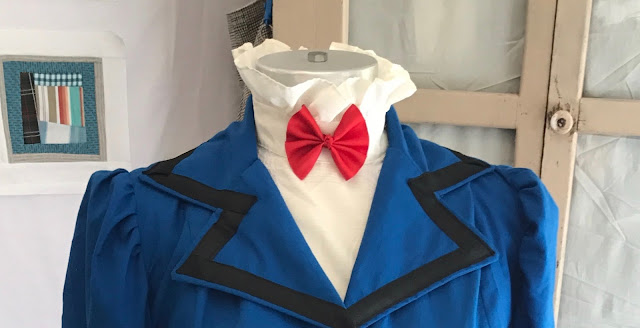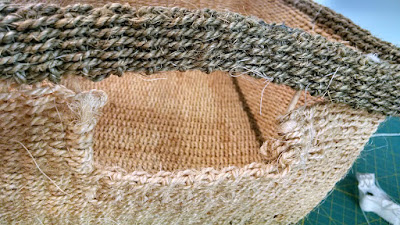Making a Mary Poppins Costume
As of late, I've been getting sucked in to my local theater. Apparently I had an inner costume designer lurking in a dark corner of my being. Well, she's out now!
The thing is, that while I've been sewing for over 20 years, it's mostly been quilting. Following clothing patterns isn't something I've really done.
Enter Mary Poppins. My local theater was doing a production of this play and renting her iconic costume was cost-prohibitive. I volunteered to build it.
I used Simplicity Pattern 2581 and muddled my way through over the course of about 10 days including alterations and fittings. The most difficult part is the collar and I'll admit mine didn't come out perfectly, but it was good enough for this purpose - and that's what counts right?!
The skirt was a piece of cake. I used the Truly Victorian 1870's Underskirt Pattern TV201 and whipped it right up. I skipped the pockets because they were uneccessary in this costume. Historically clothing was already made with frequent alterations in mind - maternity clothing wasn't an option and neither was birth control - so these skirts have the versatility built right in.
Costumes are unique in that you often make them with future shows and alterations in mind. I cut the largest size of the pattern and brought it in significantly for our actress. I didn't make a lining in order to make future alterations easier. I also skipped the pockets for simplicity's sake. That way different pocket details can be added to the outside if needed for different shows.
Another consideration for costumes is quick-changes. Costumes can take some abuse over the course of a show and also need to be as simple as possible to get in and out of. I used these extra large dress hooks - they were a lifesaver for quick changes. The usual tiny dress hooks weren't working and having something that can be moved easily to accommodate different actors in different shows is always a plus.
The base garment is quite bland. All of the details on this ensemble are stitched to the outside and can be removed or replaced easily. I used thrifted buttons and trim - this is something I always try to do for the sake of sustainability, but it also helps in a situation where the budget is tight.
We pulled a blouse from the existing costume collection and added a red bowtie - the iconic hat was made by another member of the team, but my part was a success - and an excellent chance to learn some new things.









Comments
Post a Comment